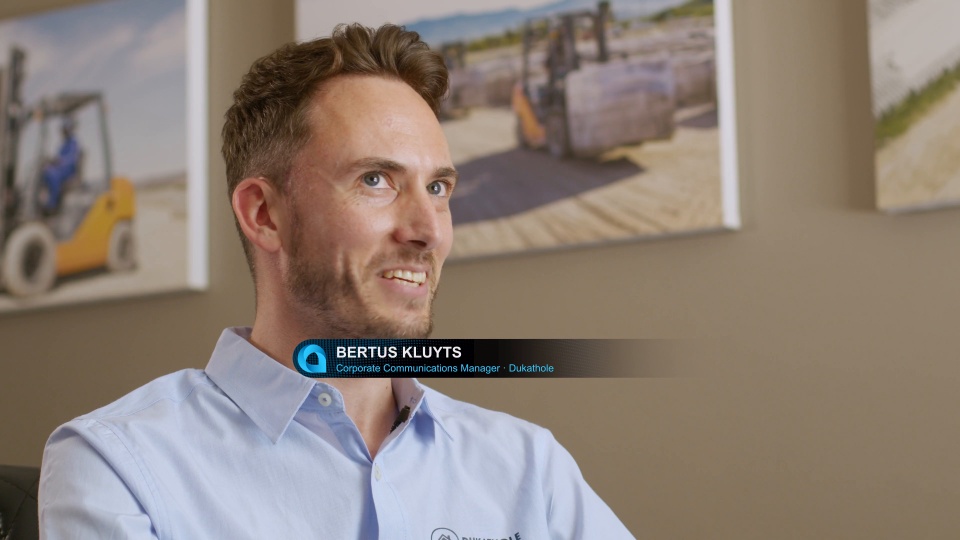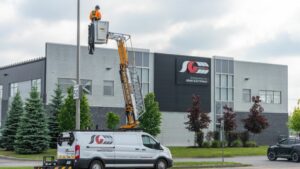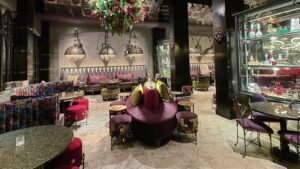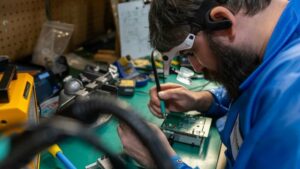Founded in Aliwal North, South Africa, 20 years ago, Dukathole Group became the country’s largest manufacturer of high-quality concrete bricks, reporting a 52% annual growth rate for the past decade as demand for its bricks exploded.
Cement bricks serve as the primary building material for houses allocated to approximately 12.5 million South Africans, who squat in settlements outside cities and in the gardens of formal dwellings. The South African government estimates a national shortfall of 2.1 million homes. According to the BBC, with an annual delivery rate of 136,000 homes, only 1.5 million of the 2.1 million needed will be available by 2030. Meanwhile, the population continues to grow.
Hoping to help close the housing gap, Dukathole’s entrepreneurial founder Charles Kieck and his wife Landi expanded the business into the Eastern Cape province of Queenstown in 2009 and began producing additional cement products, including roof tiles, pavers, lintels & pre-cast products. These moves transformed the business into a one-stop-shop for cement products. They also opened another brick-making production site in Herschel following a spike in demand.
Three Major Acquisitions Accelerate Company Growth
Recognizing its Queenstown facility couldn’t supply the whole Eastern Cape with bricks, Landi decided to bid on two struggling brick makers in business rescue, INCA, which has two branches – each two hours in different directions from Queenstown and Laman.
However, simply making and selling bricks was not enough. By participating in the government’s Reconstruction Development Program or RDP housing market, the Kieck’s determined that every South African Rand (1 Rand = ~$0.06295 Dollar) saved means someone living in a shack could get a home. Landi realized acquiring MMS Developments, a construction company also in business rescue, would enable expansion into the home building market. Dukathole bid on all three companies even though MMS lost $R40 million over two years and Laman had not been profitable since 2006.
“We were quietly confident that we would be able to absorb this exponential growth and that our financial track record, lean management practices, and strong asset base would enable us to successfully obtain the funding required,” Landi wrote in an annual letter summarizing the acquisitions.
Part of that confidence stemmed from a Sage implementation in progress. Dukathole planned to have the ERP system running in order to share insights before the acquisitions closed. The detailed financial figures would strengthen their bids and help them secure funding.
The Mounting Costs of a Failed Sage ERP Implementation
Dukathole won and closed all three acquisitions: INCA in January, MMS in February, and Laman in July. But the Sage implementation was failing and threatened the business. For example, from August through October, the company could not generate customer statements, draw debtor statements of creditors for aging reports, or view inventory stock levels.
“It was a horrible implementation, one that didn’t work, and one that didn’t have any support,” says Graham Leonard, who joined Dukathole Group as head of finance and operations in the middle of that year. To make matters worse, “The Sage implementation partner did not understand our business, and this resulted in large bills and long turnaround times on minor change requests. In addition, Sage’s inventory management was extremely unreliable. Any configuration change had to be referred to the UK, and less than two years after we implemented Sage Live, they discontinued the product altogether.”
Dukathole had a single IT person on staff, tasked with dealing with technology maintenance, unreliable electricity, multiple wireless internet providers, and remote servers. “Sage was remote cloud and required a lot of maintenance and went down a lot,” Leonard says.
Navigating Six Disconnected Financial Systems
Without Sage, the company’s six divisions operated on six different financial systems that included various instances of Sage’s legacy Pastel accounting software. To provide the necessary acquisition paperwork, “We had to provide one consolidated spreadsheet. Everything had to be consolidated in Excel, and that was a nightmare,” Leonard says.
They knew they needed a new financial system that provided accurate data so they could:
- Lower operating costs
- Limit out of stocks
- Improve production at each manufacturing plant
- Build more houses to address Eastern Cape and Free State’s housing problems, as well as employ more than 450 South Africans
Leonard and the new supply chain manager began researching ERP systems, such as SAP BusinessOne, Microsoft Dynamics 365, Sage Evolution, Oracle NetSuite, and a fast-growing ERP player, Acumatica.
Dukathole narrowed its list. After the Sage fiasco, “we didn’t want pie in the sky promises but to see the systems work, and learn about the people who would deploy it,” Leonard says. “The major suppliers didn’t respond or sent junior people who couldn’t show us how their systems worked and often said ‘we’ll get back to you.’”
 Canada (English)
Canada (English)
 Colombia
Colombia
 Caribbean and Puerto Rico
Caribbean and Puerto Rico
 Ecuador
Ecuador
 India
India
 Indonesia
Indonesia
 Ireland
Ireland
 Malaysia
Malaysia
 Mexico
Mexico
 Panama
Panama
 Peru
Peru
 Philippines
Philippines
 Singapore
Singapore
 South Africa
South Africa
 Sri Lanka
Sri Lanka
 Thailand
Thailand
 United Kingdom
United Kingdom
 United States
United States








